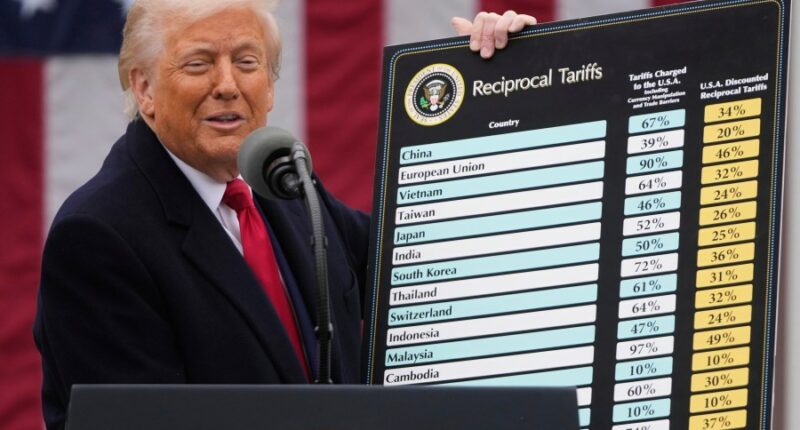Share this @internewscast.com

NEW YORK (AP) — A once subdued trade conflict between China and the U.S. has escalated, as recent developments have reignited tensions and prompted fears of further economic confrontation.
Now, hostilities appear to be returning to full boil.
This week saw a sequence of retaliatory actions from both nations, drawing global attention back to their ongoing trade feud, unsettling financial markets, and heightening concern over potential future developments.
“It’s like provoking the bear once more,” commented economist Aleksandar Tomic, associate dean at Boston College, on the renewed confrontations. “Let’s shake up the hornet’s nest.”
A look at where things stand in the U.S.-China trade standoff:
Signs of trade-war escalation roil markets
U.S.-China tensions go beyond any administration or political party. However, Donald Trump’s return to office has intensified discord. Throughout the first half of the year, tariffs were alternated multiple times, provoking inevitable retaliatory measures from China’s leader Xi Jinping. Nonetheless, a relatively calm period had been observed in recent months.
That apparent ceasefire began to unravel this week when China imposed stringent new restrictions on exporting rare earth minerals vital to tech industries. Subsequently, Trump declared intentions to impose an additional 100% tariff on Chinese imports by November 1 and imposed export controls on U.S. software. New port fees on each other’s vessels also ensued.
It remains unclear if these public actions by Washington and Beijing aim to progress private negotiations. However, they have shaken stock markets, with the S&P 500 enduring its worst trading day since April, introducing fresh uncertainty about the future.
“Either this is it, the so-called tariff truce is over and both sides are going to rapidly escalate or these are negotiation talks ahead of the talks between Xi and Trump,” said Marc Chandler, chief market strategist at Bannockburn Capital Markets in Cincinnati, Ohio.
Jostling for advantage, with exports as bargaining chips
With so much unknown about any possible behind-the-scenes negotiations between the two nations, it is hard to gauge who might have the upper hand.
But China may sense an opening, with Trump challenged by a government shutdown and the impacts of the ongoing trade war.
American soybean farmers who long relied on Chinese sales are now being passed over for exports from Brazil, Argentina and elsewhere. U.S. investors have happily watched markets driven upward by excitement over artificial intelligence, but China dominates the world in the rare earth minerals that are key to technological hardware. American consumers who have come to expect an endless supply of cheap goods that roll off Chinese conveyor belts are bracing for higher prices.
“It becomes an issue of who can replace supply chains faster. And, at least right now, I think China is winning that one,” Tomic said. “I don’t know what the cycle of a soybean is, but I bet you can grow a soybean faster than you can build a toy factory.”
Are tariff threats empty or a negotiating strategy?
Trump has suggested a deal is still possible.
He has frequently made threats that turn out to be empty, used as part of a negotiating strategy. For now, Trump has not formally canceled a meeting planned with Xi later this month on the sidelines of the Asia-Pacific Economic Cooperation summit, though he said nothing was certain.
“I don’t know that we’re going to have it,” he said in the Oval Office on Friday. “I’m going to be there regardless, so I would assume we might have it.”
Chandler said it might appear to be a sudden, dramatic blowup between the U.S. and China, but it is really just more of the same from two parties embroiled in an acrimonious, long-running feud.
“It’s sort of like a divorce: The wife and the husband are accusing one another of things that, from the outside, look more complicated,” Chandler said. “This kind of story doesn’t have a good guy. We want to have a good guy and a villain. But these are just two large countries both seeking national advantage.”
___
Matt Sedensky can be reached at msedensky@ap.org and














